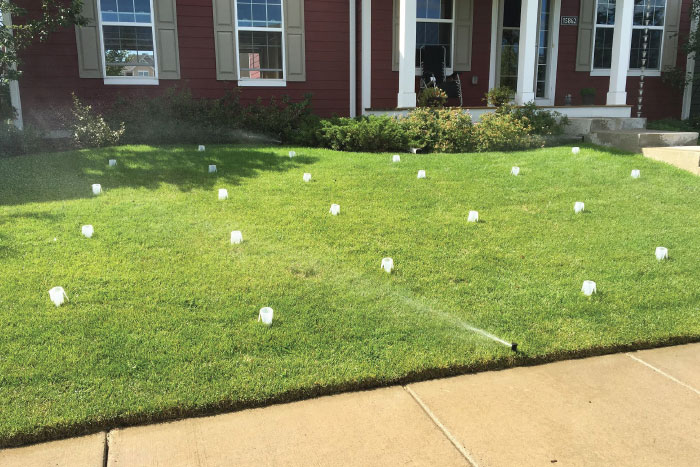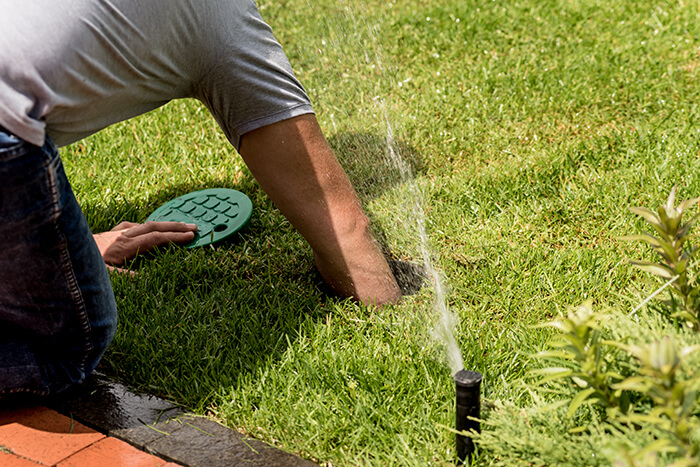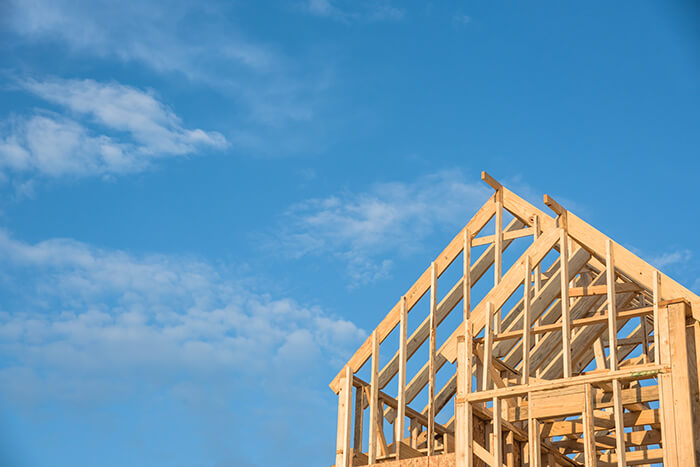Designing an effective irrigation system requires calculating the moisture requirements of a landscape, then building a system to deliver that moisture. Without a working knowledge of hydraulics, that could be a very challenging task. Hydraulics and irrigation systems go hand in hand, and you simply can’t have a functioning irrigation system without hydraulics.
As a certified irrigation designer with years of experience working as a contractor, distributor and now for a manufacturer, Chris Keating, district sales manager for The Toro Company, shares his insight into how understanding the concept of hydraulics can ensure that an irrigation plan design and the irrigation products selected for any system will work as intended once installed.
How hydraulics affect system design
“Hydraulics is a principle, not a function,” Keating says. “Hydraulics as it relates to irrigation is the relationship between flow, velocity and pressure. Any change in one affects all.”
Picture hydraulics as an umbrella under which flow, velocity and pressure fall. Each of those fundamental pieces affect the function of an irrigation system.
“You can’t design a system without considering all the factions of hydraulics,” Keating says. “To have a credible, functioning system, you need to have a mastery of hydraulics within all the things that affect it.”
Oftentimes, contractors worry about pressure in a system and disregard equally important factors like flow and velocity.

“You can build a system that seems to be functioning fine but is actually deteriorating from surges of velocity that are too dangerous for the common good,” Keating says.
Similarly, miscalculating the pressure of a system can be detrimental to the way it functions. It makes sense that without adequate water pressure, sprinkler heads won’t work as intended, but it’s not enough to simply measure pressure without considering other factors, like friction loss.
“When the water is static, you can read the pressure and make assumptions that there is enough pressure to build a sprinkler system, but quite often, there are site conditions or water delivery scenarios that put demands on water pressure that can’t simply be overcome,” Keating says. “If you don’t understand hydraulics principles you can wind up with a system that doesn’t operate when you turn it on because of too much pressure loss.”
Misunderstanding velocity, or the speed the water is moving through the piping network, is also detrimental to an irrigation system. Keating says that problematic velocities can be caused by incorrect piping size or flow considerations.
Although the system may still operate, when water moves too quickly through piping it can create surges and hammers that deteriorate both piping and equipment, negatively affecting the longevity of the system. According to Keating, velocities of 5 feet per second are generally safe and effective. In general, as the piping gets larger, the slower the water should move.
Pressure can be tested with a gauge that is used in conjunction with charts and tables supplied by manufacturers. According to Keating, one general mistake is that contractors don’t understand the difference between static pressure, which is the pressure when the water is not moving, and dynamic pressure, which is a measure of water in motion. Dynamic pressure accounts for considerations like friction loss and elevation.
Keating suggests one common best practice of learning how to do both a static pressure test and a flow test. The combination of the two measures helps avoid the pitfalls that come with relying on one measure alone, Keating says.
Understanding elevation
Another part of understanding hydraulics is understanding how elevation affects water pressure. According to Keating, pressure is developed either from elevation or pumps. Sometimes, pressure is developed from a combination of both elevation and pumps.
“When you measure water statically, you will be reading elevation. But as you flow water and design a system, that water may move to a lower or higher spot on the property and that elevation change will also affect the end result,” Keating says. “Elevation has to be considered in the design and calculations as part of the umbrella of hydraulics.”
Though it’s a generalization rather than an exact science, Keating says that every foot of elevation, whether uphill or downhill, will increase or decrease pressure by about one half of a pound. That’s why elevation has to be figured into the design and calculations of an irrigation system.
 “If your water has to travel uphill 20 feet, you will not only have the friction losses, but also another approximately 10 pounds of pressure just to get water from the bottom to the top of the hill,” Keating says. “If your point of connection is 20 feet higher than the sprinkler it is flowing to, you’ll pick up about 10 pounds of additional pressure. You need to consider hydraulics back from where the water is being delivered to the meter all the way through to the water that is being delivered from the furthest sprinkler head in the system.”
“If your water has to travel uphill 20 feet, you will not only have the friction losses, but also another approximately 10 pounds of pressure just to get water from the bottom to the top of the hill,” Keating says. “If your point of connection is 20 feet higher than the sprinkler it is flowing to, you’ll pick up about 10 pounds of additional pressure. You need to consider hydraulics back from where the water is being delivered to the meter all the way through to the water that is being delivered from the furthest sprinkler head in the system.”
While there are often no indications of elevation changes on site plans or if the elevations are difficult to decipher, Keating says overlooking elevation is a common pitfall, as elevation is a critical component of hydraulics.
“Learn to look for elevation changes,” he says. “The world is not flat.”
The eyeball test is a simple starting point for identifying elevation. If you drive up a hill to a property with a water supply in the street, it is apparent that there are elevation concerns. If you park on the street and walk down a hill to a house with a water supply in the street, it is clear that additional pressure is being created by the elevation change.
“If you take a static pressure test at the house near the point of connection, the elevation is already figured in for you,” Keating says. “The elevation has already affected the pressure at the point where you’re testing. If there is an elevation change from where you connect the system to where it will be operating, you need to figure that into your design.”
Consider a system that is connected at a house downhill but requires water at street level to irrigate a section of lawn.
“When you measure the elevation statically, you gained the pressure of the water coming down to the house. But in the design, you have to calculate the loss in pressure to move it back up the hill,” Keating says.
Troubleshooting
You’ve designed and installed an irrigation system, but when you turn it on, you find that there isn’t enough pressure to operate the system. While there is a fix for the problem, Keating says that at this point in the project, the fix is a plumbing solution rather than an irrigation solution.
“You’ve got to know this stuff before you build the system because, generally, fixes are a Band-Aid on a gaping wound,” Keating says. “It’s easier to fix on paper in the design stage, than when it’s in the ground.”
 Changing the nozzle size is one way to get the system functioning. A smaller nozzle reduces both flow and friction loss and helps increase pressure to the sprinkler. Despite the system functioning, it is important to understand that, without making other tweaks, the system will not provide the same level of irrigation to the landscape.
Changing the nozzle size is one way to get the system functioning. A smaller nozzle reduces both flow and friction loss and helps increase pressure to the sprinkler. Despite the system functioning, it is important to understand that, without making other tweaks, the system will not provide the same level of irrigation to the landscape.
“If you make the nozzles half as large as they were in order to deliver same amount of irrigation, you’d need to run that zone twice as long or twice as many times,” Keating says. “You’ve made the appliance function, but not delivered on its purpose.”
While adding a pump could help, Keating says a pump can sometimes create additional problems. Another option is locating the biggest restriction. If it is in the service line to the house, it’s a problem that can’t be remedied.
While some suppliers may have staff with the capability to review design plans and provide feedback or support, Keating says his best recommendation is for contractors to embark on the process of becoming a certified irrigation designer. The knowledge gained through that process will prove invaluable to irrigation professionals.
“Hydraulics is a component of design, but it’s just one component of design,” Keating says. “It’s the part of the design process that ensures that the equipment we select and use functions as intended. The rest of the basics, like why do you put sprinkler heads where they go, which ones do you use, that’s a different part of the design process.”
Key design tasks when working with hydraulics
- Measure the site and record specific irrigation requirements.
- Determine the size and location of the water meter.
- Determine the type of material, size and length of service line from the city water main to the proposed location of the backflow prevention device.
- Measure and record static water pressure.
- Estimate the amount of friction loss in the entire system.
- Determine the design operating pressure from the estimated friction losses.
- Calculate the available water on the site.
- Determine the number of zones from the available water and total number of sprinklers.
- Check for total friction losses from the point of connection to the most critical head on the system.
- Make any necessary adjustments to component sizes and design.





